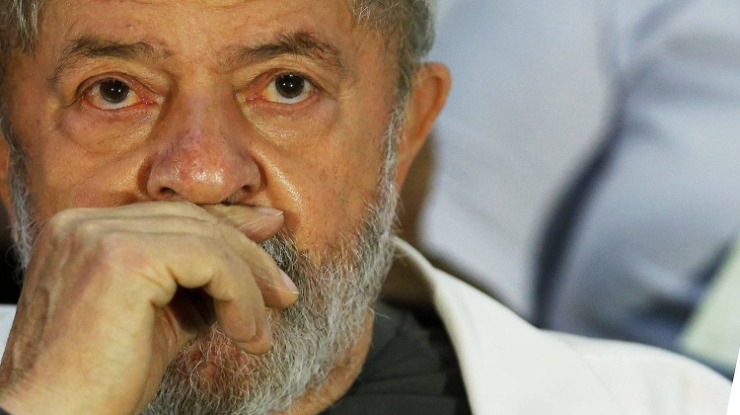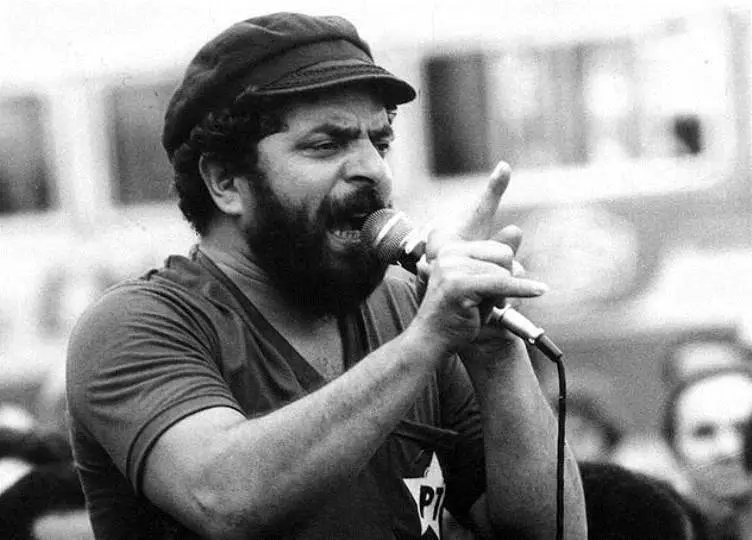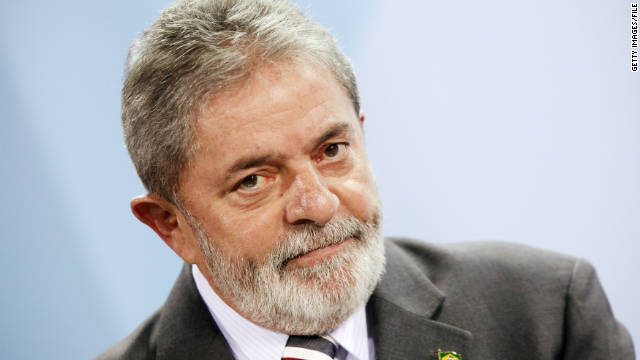By Nehomar Hernández*
(Opinion) This Sunday, Brazil will go to the polls in the most important presidential election in a long time.
Although the phrase may sound empty, it is not the case.
What is at stake on Oct. 2 is the possibility of keeping the country on the path of post-confinement economic recovery, the defense of life, democracy, and freedoms, and reelecting Jair Bolsonaro.
Or subscribing to the return of corruption and the alignment with the non-democratic countries of the region through the highly dubious São Paulo Forum by putting Luis Inácio Lula da Silva back in the Planalto Palace.
Lula da Silva began his steps in Brazilian politics as head of industrial unions in São Paulo, where it was common to see him calling strikes.

All this until 1980, when he founded the leftist, pro-worker Workers’ Party (PT).
The party quickly grew in power within the country’s trade union confederations and, above all, in those that grouped the workers of São Paulo.
In 1986, after the end of the military dictatorship and the arrival of the civilian José Sarney to the transitional presidency, the former union agitator decided to take the plunge into national politics.
He obtained a seat in the National Constituent Assembly, which by 1988 had ready a new Magna Carta for Brazil.
This instrument also favored the direct election of the President of the Republic in the years to come.
In 1989 Lula decided it was time to run for the country’s presidency.
To do so, he took the card of a PT that had already accumulated strength: it had won a considerable representation in the Constituent Assembly itself (about 15 deputies), besides winning half a dozen mayorships in the municipal elections of 1988.
In those elections, the leftist organization also won the critical mayoralty of the city of São Paulo.
However, the presidential adventure of the party’s main protagonist did not go as expected: He lost to Fernando Collor de Mello in the second round of voting by a difference of six percentage points.
In 1994, after an eventful and interrupted government of Collor de Melo that ended up collapsing due to corruption scandals in the middle of his term, Lula da Silva decided to run again for the presidency of Brazil.
He was defeated again by the economist Fernando Henrique Cardoso.
This time the leftist leader did not even make it to the ballotage, since in the first round, Cardoso won 54% of the votes of Brazilians.
Lula da Silva’s persistence in conquering power by electoral means was no coincidence.
Although he is a man of the purest tenets of the traditional left in the Americas – the one that has always had violent insurgency, guerrilla terrorism, and kidnappings as means of gaining acceptance in politics – his case represents a turning point in the tactics used by socialists and communists in Latin America in the 1990s to gain and maintain the presidency of nations.
THE CREATION OF THE SÃO PAULO FORUM
It was precisely with Lula da Silva that, in 1990, the foundation of what we know today as the São Paulo Forum took shape, a network in charge of instrumentalizing pacts between leftist groups and individuals in the region to reevaluate the tactics for the search for and preservation of power.
By then, the old Spanish-American guerrilla struggles had already lost their appeal and romanticism in the international press, mainly due to their criminal profile in Peru, Nicaragua, Colombia, and Venezuela.

Therefore, it was essential to give these groups a new makeover to make them more acceptable to the communities of each of their countries.
Based on this great upsurge of the left, Lula, together with the Cuban tyrant Fidel Castro, led the formation of a corporation born to use the means of democracy to gain power and, from there, to undermine these democracies through ideologization, authoritarianism, and a high level of corruption.
The coming to power of Hugo Chávez in Venezuela in 1998 was the first great triumph of this corporation, both in symbolic terms and in terms of managing enormous economic resources for its allies from that moment on.
Thus, the former trade union leader created a coalition that served as an amalgam to build tyrannies that subjugated -and still conquered- their peoples.
Daniel Ortega in Nicaragua, Hugo Chávez in Venezuela, Evo Morales in Bolivia, and Néstor and Cristina Kirchner in Argentina are just a sample of this.
Returning to Brazil’s electoral history, in 1998, Lula da Silva ran again for the presidency and was defeated by Fernando Henrique Cardoso, who was reelected that year.
THE ASSAULT ON POWER IN 2002
It was not until 2002 that Lula da Silva won the presidency of the largest South American country on his fourth attempt.
In October that year, he won in a second round of voting against José Serra – Cardoso’s dauphin – with 61% of the votes.
Since his arrival in power, the Brazilian leader became -along with Chavez- the perfect cult specimen for the global leftist press.
Both supposedly demonstrated that it was possible to make a “democratic revolution” without spilling a single drop of blood, to bring “social justice” to their poor peoples “oppressed” for decades by imperialism, neoliberalism, and who knows what else.
In the case of Venezuela, history has been crude enough to reveal how Chavism turned into a colossal fraud.
Expropriations, media closures, persecution of dissidents, the bankruptcy of the oil industry, the perversion of the military forces, collaboration with criminal groups involved in drug trafficking, and the creation of a diaspora of more than seven million migrants provide sufficient testimony of the magnitude of the tragedy.
On the other hand, Lula da Silva’s Brazil wanted to be sold as a non-meat-eating leftist reference, tending more to raise the herbivorous banners of “progressivism” than real socialism.
And so Lula da Silva spent his eight years in power, from 2003 to 2011, selling the idea of being a socialist who, paradoxically, was capable of creating an “economic miracle” that was transforming Brazil into a world power.

IMPRISONED FOR 580 DAYS
The myth had short legs.
It was precisely in Lula da Silva’s “buoyant” Brazil that what has been described as the most significant mega-corruption case in the contemporary history of Latin America was taking place.
The one promoted by the Brazilian construction company Odebrecht.
A company that has been accused of having paid bribes close to 800 million euros in at least 12 countries in the region.
Odebrecht’s tentacles extended from Argentina to Mexico, disbursing millions and millions in its path to evade the natural bidding processes in the construction of works financed by the governments of each country.
In Brazil alone, the scandal at the time involved a third of the senators, eight Lulista ministers, and half of the nation’s governors.
In the country of Lula da Silva and his successor, Dilma Rousseff (later removed from office for corruption), where the “development” of significant works financed by the government became a letter of introduction to the world, it is estimated that the company paid around 350 million euros in bribes to the political class.
In addition, in March 2016, Judge Sergio Moro, heading the anti-corruption operation Lava Jato, uncovered new scandals of bribes to Brazilian politicians also coming from the state-owned oil company Petrobras.
In 2017 Lula da Silva was sentenced by Judge Moro to nine years and six months in prison on charges of “passive corruption” and “money laundering”, expressed in the reservation to acquire a luxury apartment in São Paulo.
In addition, Lula da Silva was sentenced to two years and 11 months in prison for remodeling 2010 a house located in São Paulo with money from Odebrecht, charged with the crimes of active and passive corruption and money laundering.
These cases led the former President to be imprisoned in 2018.
Still, he only served 580 days of the sentence since the Brazilian Supreme Court, in an unusual decision, and with Justice Edson Fachín at the head, annulled in 2021 all the convictions established against Lula da Silva due to “technical-formal” criteria.
The pretext used was that the court that initially tried the former President – a court based in Curitiba (in the south of the country) – did not have jurisdiction to do so and that the trials had to start from scratch in a court in Brasília.
Beyond the judicial implications, the Supreme Court’s decision opened the door for Lula da Silva.
The Supreme Court had presided over Brazil amid the region’s most significant corporate corruption scandal in recent decades, to be politically rehabilitated to run again as a presidential candidate.
It was both shameless and senseless at the same time.
* Venezuelan journalist (Universidad Central de Venezuela) and Master in Political Science (Universidad Simón Bolívar).
He is currently working on his doctoral thesis in Political Science and hosts the radio program “Y Así Nos Va”, on Radio Caracas Radio.

